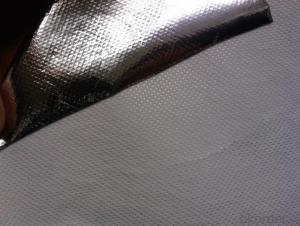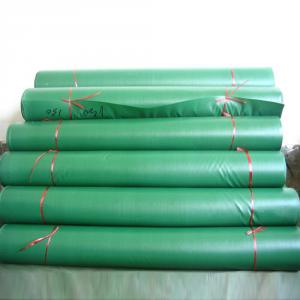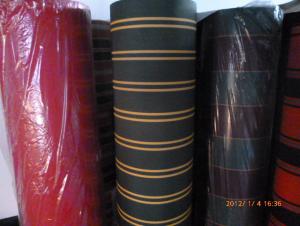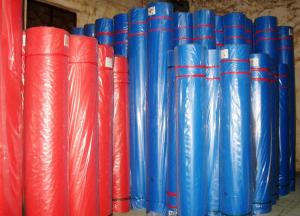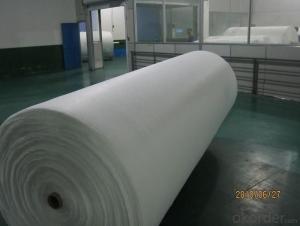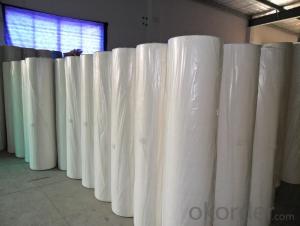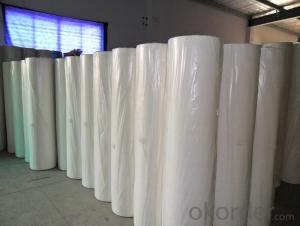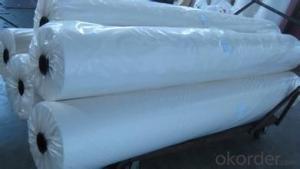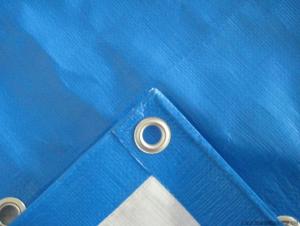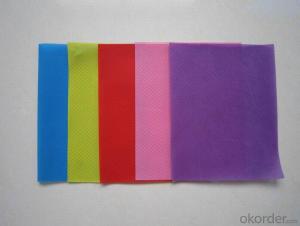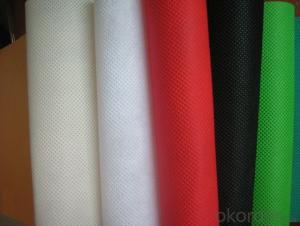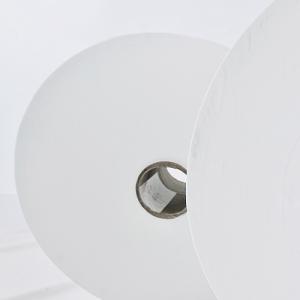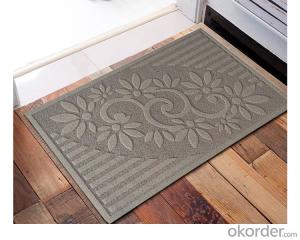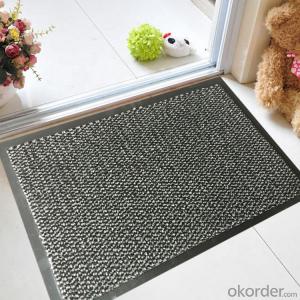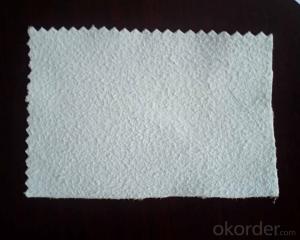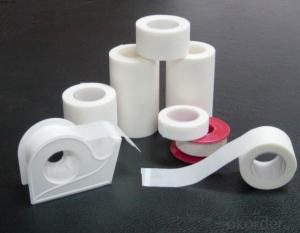wholesale cheap fabric for making bags, tnt non woven fabric for packaging
- Loading Port:
- Shanghai
- Payment Terms:
- TT OR LC
- Min Order Qty:
- 1000 kg
- Supply Capability:
- 10000 kg/month
OKorder Service Pledge
OKorder Financial Service
You Might Also Like
Characters of wholesale fabric & non woven fabric;
1.no-toxic ,breathable ,mothproof ,anti-bacteria ,eco-friendly .
2.original manufacturer with good quality and cheaper price .
3.many colors and function product for you choose .
4.good service and timely delivery .
wholesale fabric &non woven fabric ;
1.100% PP; 2.Machine width : 2.1M; 2.4M 3.Weight: 9-250g; 4.Color: Any color is available
Usage of wholesale fabric &non woven fabric ;
1.Medical : face mask ,cap ,bedsheet , disposable underwear ,protective clothing ,surgical gown, curtain,etc.
2.Industry : waterproof ,roof material ,dam cloth .
3.Packing : nonwoven bag ,gift bag ,storage bag , home textile, pillow, cushion, mattress packing,etc.
4. Agriculture: agriculture cover, plant cover, weed stop, weed barrier, garden fleece, frost protector
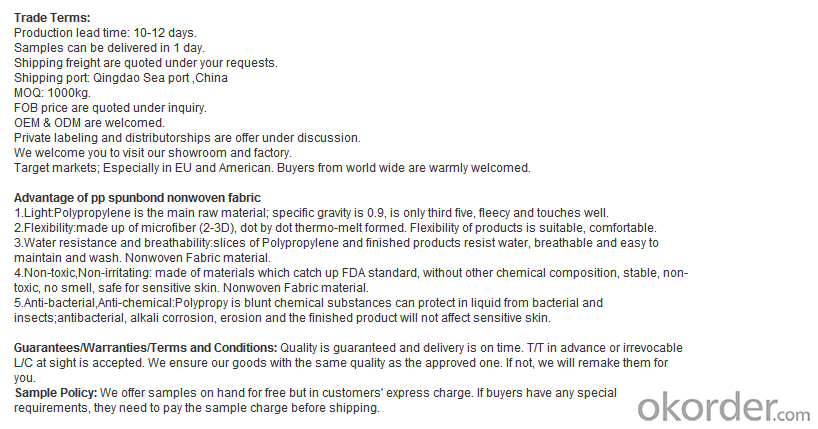

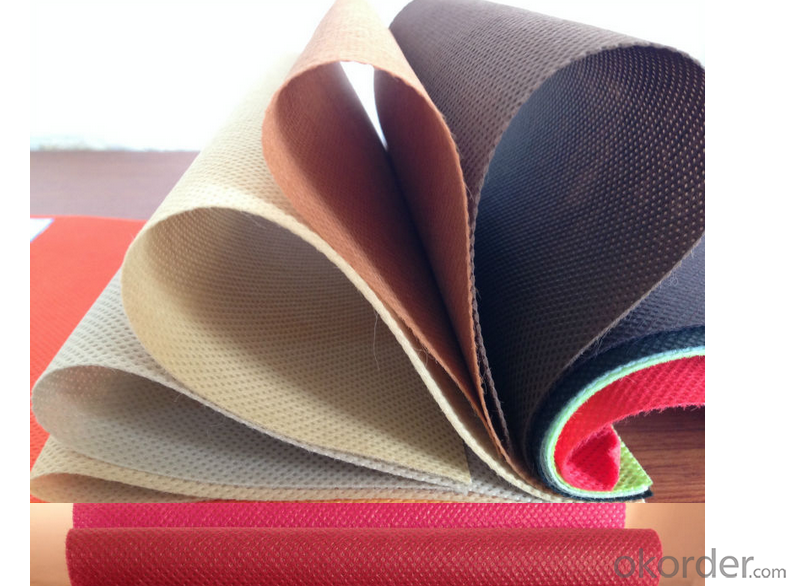
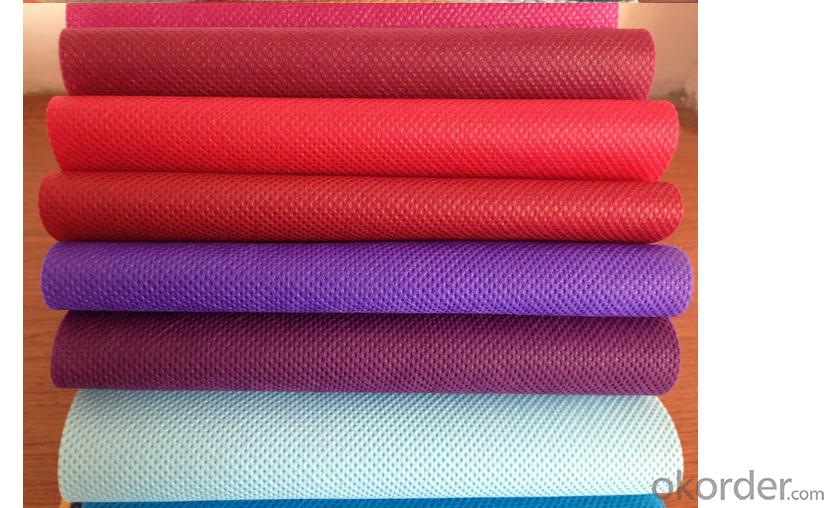
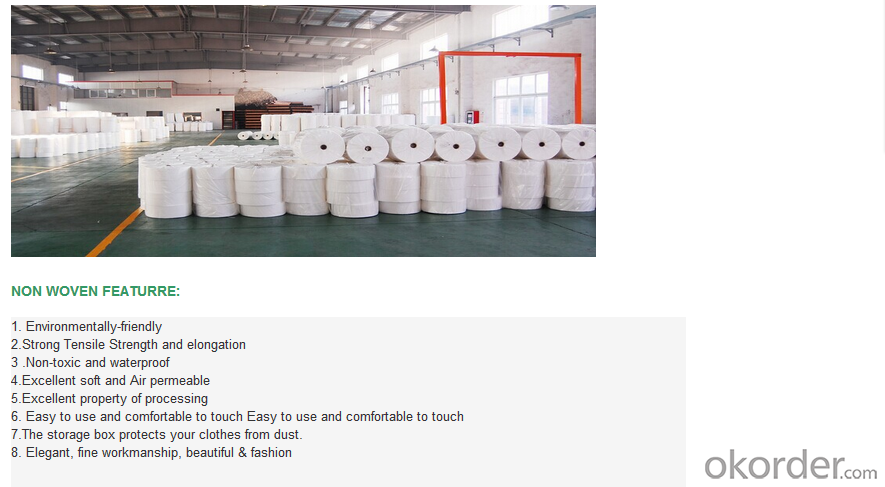

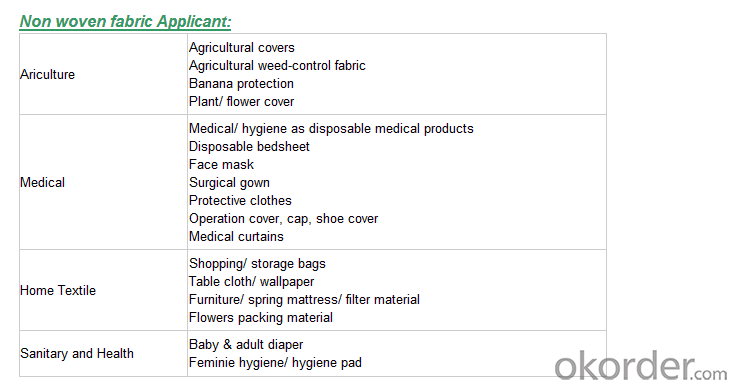
We are recognized as a reliable Manufacturer, Exporter and Supplier of Non Woven Fabric. We can provide Non Woven Fabric in any gram/m2 and any colour required by customer. Non Woven Fabrics are broadly defined as sheet or web structures bonded together by entangling fiber or filaments (and by perforating films) mechanically, thermally or chemically. PP Spun bonded Non woven Fabrics are produced using a precise extrusion-based technology. The polymer is stretched into a continuous filament and loosely spread onto a conveyor belt to form the web. Air is used to form and lay the fabric filaments. On the other hand, some non woven fabrics can be recycled after use, given the proper treatment and facilities.
Product Specifications
Weight: 10 - 150 gsm
Width: Max 1600 mm (can be slit)
Fabric Roll Length: As per buyer’s need ( 200 - 1200 Mtr)
Color: various colors available.
Procedure of production: Spun bonded Non Woven, Diamond design
Material: polypropylene
Minimum Order: 1000 Kg
Sample: sample free, freight collect
Product Application
Non woven fabric manufacturers usually manufacture the fabric in a roll form. It is then sent to various other industries where it has end applications, where is it cut and given different form depending upon the use. They can also be used in combination with different materials and offer a wide range of products.
Colored Non woven fabrics are use in many sectors and variety of applications, such as Health, Hygiene, Medical, Packaging, Agriculture, Furniture Upholstery, Geo Textiles, Leather Industry, Shoes and Garments. Customers come from the textile and automotive industries as well as many other sectors.
- Q:Textile printing and dyeing process which
- Dyeing is a more complex process, different quality of cloth dyeing process is different, cotton, polyester cotton, nylon, polyester, chemical fiber products, blended products and so on. Some use of pad dyeing, roll dyeing, and some must use high temperature and high pressure dyeing, and some only once, and some to color several times.
- Q:Textile fabric classification, dyeing and finishing processing is what?
- New type of fabric in the chenille fabric, knitted bamboo fabric should also be classified.
- Q:The weight of the textile fabric
- Raw material costs, raw material costs = yarn per yarn X yarn price, how to calculate the amount of yarn per meter? We put all the fabrics into non-elastic fabric, weft fabric, four-sided fabric to show one by one.
- Q:What is the whole process of textile and apparel trade?
- (1) The first is the main material, such as fabric varieties, yarn count, structure, weight, color (with particular attention to special colors, such as Ma gray); (2) accessories, including zippers ( Whether it is special, such as YKK), rope, buckle, eye, lace, elastic, woven cloth (should pay attention to whether the need for dyeing), horizontal machine rib, the main standard, water marked, tag, decorative cards.
- Q:Textile industry after finishing what pollution, especially air pollution
- Hello I am a person engaged in the field of environmental science sewage remediation industry a year first said that the current government sewage on the enterprise requirements for the main COD and ammonia nitrogen because the two will cause serious harm to the river
- Q:Development of Textile Fibers.
- China's textile enterprises should overcome the current raw material prices, the appreciation of the renminbi and export tax rebate adjustment difficulties, seize the opportunities for the development of the textile industry to improve the concentration of industries to curb the blind expansion of inefficient production capacity to increase the construction of special industrial parks, Innovation, the pace of China's textile industry to enhance the brand building, industrial restructuring and upgrading. So that China by the textile power to the textile power forward.
- Q:Textile finishing TPU, TPEF film. What's the difference?
- Hardness range: by changing the TPU reaction components of the ratio, you can get different hardness of the product, and with the increase in hardness, the product still maintain good flexibility and wear resistance.
- Q:What are the types of textiles that are different?
- According to the use can be divided into clothing with textiles, decorative textiles, industrial supplies three categories;
- Q:Classification of cotton textiles
- According to the use can be divided into clothing with textiles, decorative textiles, industrial supplies three categories;
- Q:What is the earliest textile raw material?
- Textiles of different periods are one of the measures that measure the progress of mankind and civilization
1. Manufacturer Overview |
|
|---|---|
| Location | |
| Year Established | |
| Annual Output Value | |
| Main Markets | |
| Company Certifications | |
2. Manufacturer Certificates |
|
|---|---|
| a) Certification Name | |
| Range | |
| Reference | |
| Validity Period | |
3. Manufacturer Capability |
|
|---|---|
| a)Trade Capacity | |
| Nearest Port | |
| Export Percentage | |
| No.of Employees in Trade Department | |
| Language Spoken: | |
| b)Factory Information | |
| Factory Size: | |
| No. of Production Lines | |
| Contract Manufacturing | |
| Product Price Range | |
Send your message to us
wholesale cheap fabric for making bags, tnt non woven fabric for packaging
- Loading Port:
- Shanghai
- Payment Terms:
- TT OR LC
- Min Order Qty:
- 1000 kg
- Supply Capability:
- 10000 kg/month
OKorder Service Pledge
OKorder Financial Service
Similar products
New products
Hot products
Hot Searches
